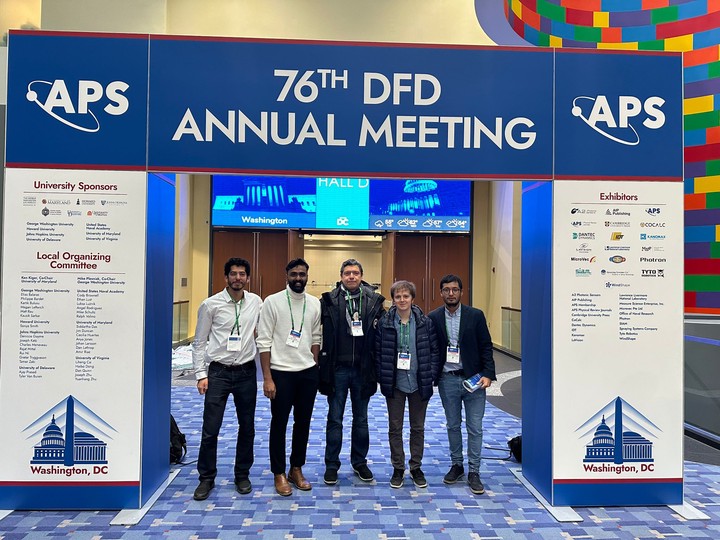High-speed drop impact onto moving pools: ejecta sheets and splashing

Abstract
Droplets often impinge at high-speed onto moving liquid surfaces, transforming droplet impact into a fully 3D problem, up from the typical axisymmetric configuration of normal impact on a static pool. Examples include rain drops landing on oceans and vehicles, in addition to inkjet printing and additive manufacturing. We investigate fast (>2 m/s) droplet impact onto slower-moving (<0.5 m/s) deep liquid pools, whilst also varying the droplet impact velocity and diameter, in addition to fluid properties. Above a certain threshold, we show that pool movement has a dramatic effect on ejecta sheet dynamics in low viscosity conditions, resulting in different post-impact dynamics arising around the circumference of the droplet, and altered splashing behaviour. We present a way to parameterise the impact outcome that accurately classifies the post-impact behaviour for a wide range of fluid properties and dynamic conditions, and naturally recovers the well-known transition due to Reynolds number on static pools. We use this parameterisation alongside observations from higher viscosity conditions to offer insights into the physical mechanisms underpinning impact outcomes on both moving and static deep pools.
Acknowledgements
Funding: NSF/CBET-EPSRC (Grant Nos. EP/W016036/1 and EP/S029966/1); Royal Society URF (Grant No. URF\R\180016) & Enhancement Award (Grant No. RGF\EA\181002).
Other talks at APS DFD 2023
Yatin Darbar et al.,
Mixing dynamics between inkjet-printed droplets.
Nonu Varghese et al.,
Impacting dynamics of surfactant-laden droplets.
Luke F. Alventosa et al.,
Low speed drop impact onto moving pools: the bouncing to coalescence transition.
Miguel A. Quetzeri-Santiago et al.,
Exploring droplet impact and splashing on surfactant-laden shallow pools.